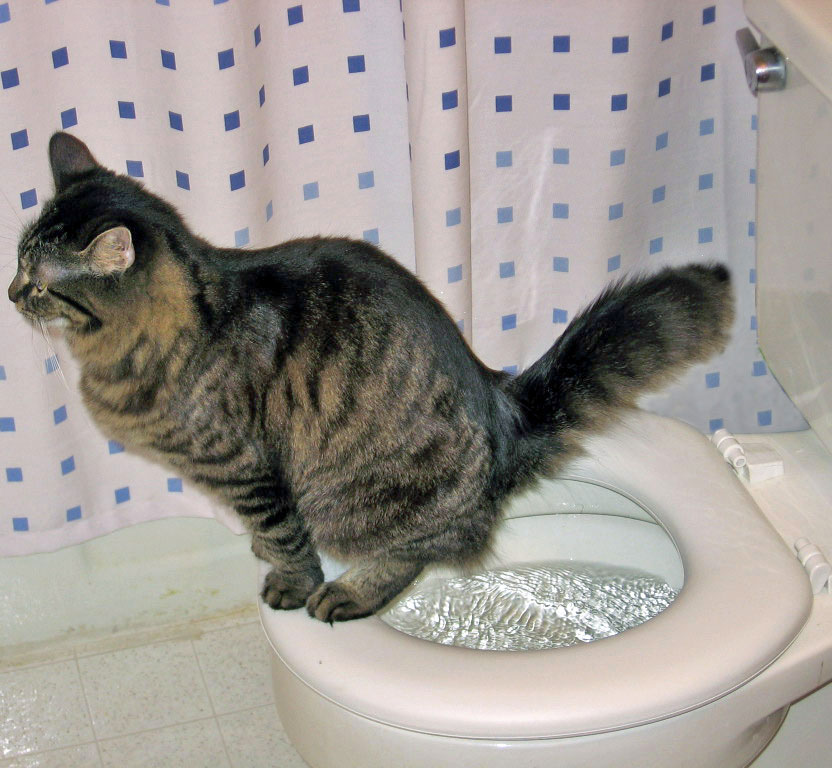The Risks of Disposing Cat Poop in Your Toilet - Precautionary Steps
The Risks of Disposing Cat Poop in Your Toilet - Precautionary Steps
Blog Article
What are your insights and beliefs about Don’t flush cat feces down the toilet?

Introduction
As cat proprietors, it's necessary to bear in mind how we dispose of our feline buddies' waste. While it may seem practical to flush feline poop down the bathroom, this practice can have damaging consequences for both the environment and human health and wellness.
Alternatives to Flushing
Fortunately, there are much safer and a lot more liable methods to take care of feline poop. Consider the complying with alternatives:
1. Scoop and Dispose in Trash
The most usual method of dealing with feline poop is to scoop it right into a biodegradable bag and toss it in the garbage. Make sure to use a committed trash scoop and dispose of the waste promptly.
2. Usage Biodegradable Litter
Choose naturally degradable cat litter made from products such as corn or wheat. These litters are eco-friendly and can be safely gotten rid of in the trash.
3. Hide in the Yard
If you have a backyard, take into consideration hiding feline waste in an assigned location far from vegetable yards and water resources. Make certain to dig deep enough to avoid contamination of groundwater.
4. Set Up a Pet Waste Disposal System
Invest in a pet dog garbage disposal system specifically developed for cat waste. These systems make use of enzymes to break down the waste, decreasing smell and environmental effect.
Wellness Risks
Along with ecological problems, flushing cat waste can additionally position wellness threats to people. Pet cat feces may contain Toxoplasma gondii, a bloodsucker that can create toxoplasmosis-- a potentially extreme ailment, particularly for expecting ladies and individuals with weakened immune systems.
Environmental Impact
Purging cat poop presents damaging virus and bloodsuckers right into the water, positioning a substantial risk to water environments. These contaminants can negatively impact aquatic life and compromise water quality.
Conclusion
Liable family pet ownership prolongs past providing food and sanctuary-- it also includes proper waste monitoring. By avoiding purging cat poop down the commode and selecting alternative disposal techniques, we can reduce our ecological impact and safeguard human health and wellness.
Why Can’t I Flush Cat Poop?
It Spreads a Parasite
Cats are frequently infected with a parasite called toxoplasma gondii. The parasite causes an infection called toxoplasmosis. It is usually harmless to cats. The parasite only uses cat poop as a host for its eggs. Otherwise, the cat’s immune system usually keeps the infection at low enough levels to maintain its own health. But it does not stop the develop of eggs. These eggs are tiny and surprisingly tough. They may survive for a year before they begin to grow. But that’s the problem.
Our wastewater system is not designed to deal with toxoplasmosis eggs. Instead, most eggs will flush from your toilet into sewers and wastewater management plants. After the sewage is treated for many other harmful things in it, it is typically released into local rivers, lakes, or oceans. Here, the toxoplasmosis eggs can find new hosts, including starfish, crabs, otters, and many other wildlife. For many, this is a significant risk to their health. Toxoplasmosis can also end up infecting water sources that are important for agriculture, which means our deer, pigs, and sheep can get infected too.
Is There Risk to Humans?
There can be a risk to human life from flushing cat poop down the toilet. If you do so, the parasites from your cat’s poop can end up in shellfish, game animals, or livestock. If this meat is then served raw or undercooked, the people who eat it can get sick.
In fact, according to the CDC, 40 million people in the United States are infected with toxoplasma gondii. They get it from exposure to infected seafood, or from some kind of cat poop contamination, like drinking from a stream that is contaminated or touching anything that has come into contact with cat poop. That includes just cleaning a cat litter box.
Most people who get infected with these parasites will not develop any symptoms. However, for pregnant women or for those with compromised immune systems, the parasite can cause severe health problems.
How to Handle Cat Poop
The best way to handle cat poop is actually to clean the box more often. The eggs that the parasite sheds will not become active until one to five days after the cat poops. That means that if you clean daily, you’re much less likely to come into direct contact with infectious eggs.
That said, always dispose of cat poop in the garbage and not down the toilet. Wash your hands before and after you clean the litter box, and bring the bag of poop right outside to your garbage bins.
https://trenchlesssolutionsusa.com/why-cant-i-flush-cat-poop/

As an enthusiastic person who reads on How to Dispose of Cat Poop and Litter Without Plastic Bags, I think sharing that post was a smart idea. Are you aware of someone else who is looking into the topic? Please feel free to share it. Thanks so much for going through it.
Call Today Report this page